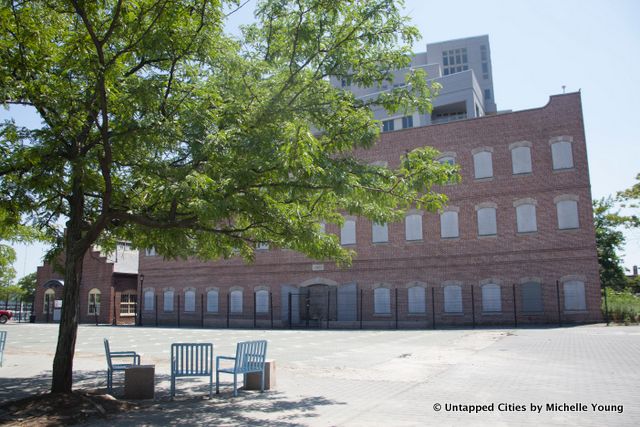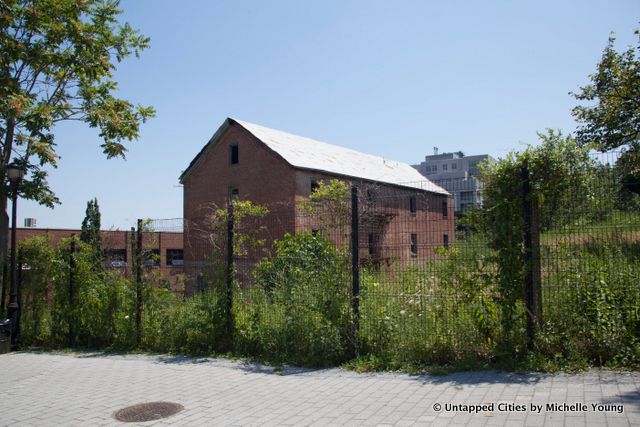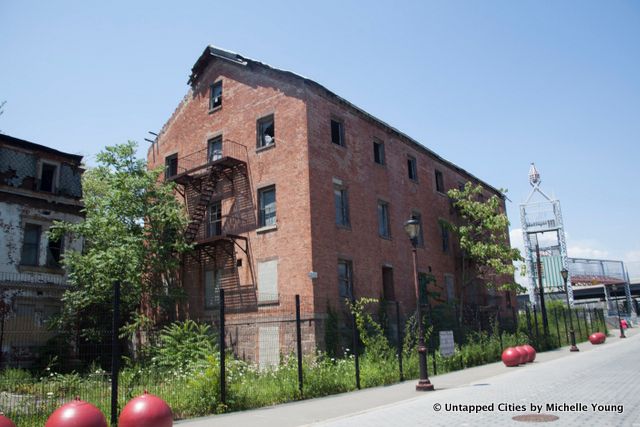Last-Minute NYC Holiday Gift Guide 🎁
We’ve created a holiday gift guide with presents for the intrepid New Yorker that should arrive just in time—



The National Lighthouse Museum, just a few minutes walk from the St. George Ferry Terminal on Staten Island will have its grand opening on August 7th, as recently reported by The New York Times. But what may be most fascinating to our readers, beyond the new museum, which had a soft launch last year and is already open to visitors is the history behind the site, a former quarantine station, and the abandoned buildings that can still be seen. In fact, the National Lighthouse Museum is the smallest building in the complex, in a foundry that once was part of the U.S. Light-House Establishment.
But before it was the U.S. Light-House Establishment, it was the New York Marine Hospital, famously burned down by arsonists in the 19th century. In 1858, Staten Island had not yet been consolidated into New York City but 1,500 of the city’s diseased were quarantined at this location, considered far enough to contain the spread of infectious diseases. Known as The Quarantine, the New York Marine Hospital was accessible by steamboat, with six-foot brick walls to fortify it from the communities of north shore Staten Island and the farmland beyond. Often, entire shiploads of new immigrants would be sent there shortly after arrival to New York, even if only one passenger or crewman was sick.

Image from the Collection of the Staten Island Museum
Staten Islanders felt burdened by this quarantine station on their land. According to the Public Health Chronicles:
The perception among Staten Islanders at the time was that if not for the Quarantine, there would be virtually no disease on the Island at all. Staten Islanders were convinced that illness came to their towns in two ways. One theory was that diseases were blown by the wind from infected vessels anchored offshore… Locals were also convinced that infectious diseases were carried into the community by Quarantine staff [who] reside in the village.
On September 1, 1858, thirty men approached and ransacked the New York Marine Hospital, which had relatively low occupancy for the night (some assume that administrators were aware of the impending attack). The hospital staff, at first scrambling to release the animals and rescue patients, were confused to find that they had all been moved. As the mob made its way around the Quarantine grounds, setting new fires, it had swelled to several hundred people. The mob resolved to return the next day to “celebrate” the burning of the Quarantine Hospital, which resulted in the burning of any remaining buildings.
Astoundingly, only two people died in the whole ordeal, though all twenty buildings bruned to the ground. One man was killed by a Quarantine worker who took the opportunity to settle an old score. Another died of yellow fever.
The organizers, Ray Tompkins and John C. Thompson, who were charged for the arson of the former Marine Hospital were acquitted of all charges by Judge Henry B. Metcalfe (himself a Staten Island man who argued for the removal of the Quarantine in 1849).

National Lighthouse Museum at left, Lenshop building center
Just six years after the riot, the U.S. Light-House Establishment took up residence, constructing new buildings on the site of the hospital. It served the U.S. Lighthouse Service’s Third District, which encompassed the coastline and waterways between Sandy Hook, New Jersey to Massachusetts.

Most of the buildings were maintenance and construction facilities, dealing with the enormous lighthouse lenses, and accompanying maritime materials like anchors, buoys, chains, and more. On the facade of the large building next to the museum, the “LENSHOP” sign, carved into the stone is still visible. According to the National Lighthouse Museum, the lightship lenses could weigh “thousands of pounds” and be “several feet tall.”
In addition, there were subterranean storage areas, nicknamed “The Vaults,” which the Museum states housed “fuels and other combustable materials for lighthouses,” and a historic wall.

It is believed that the warehouse building (above) may pre-date the Lighthouse Service, constructed in the Greek Revival style.

Administration Building
In 1939, the Lighthouse Service was folded into the United States Coast Guard and by the 1960s, the location was closed when the Coast Guard relocated to Governors Island. Part of the facility was demolished and turned into the Staten Island Ferry maintenance facility and the piers of the Lighthouse Service are in use by the ferry. In addition to the lamp shop, the barracks and administration building still stand but are in a state of disrepair. Even an information sign is falling apart, all this despite the fact that the site is listed on the State and National Register of Historic Places.


The good news is that the property, referred to as Lighthouse Point, is owned by the New York City Economic Development Corporation, which awarded Triangle Equities to develop the site in 2014, with groundbreaking planned for fall of 2015. The $200 million project will include 85,000 square feet of retail, 94,000 square foot residential housing (including 20% affordable housing), a hotel, a co-working space, an urban beach, and other outdoor recreation.The Lighthouse Museum plans to extend into Building 10 over the course of a decade.

Read more about what is coming to Staten Island’s North Shore, as we recently discovered on a Behind the Scenes NYC tour with NYCEDC. Get in touch with the author @untappedmich. Part of this article also written by Phillipe Chatelain.
Subscribe to our newsletter